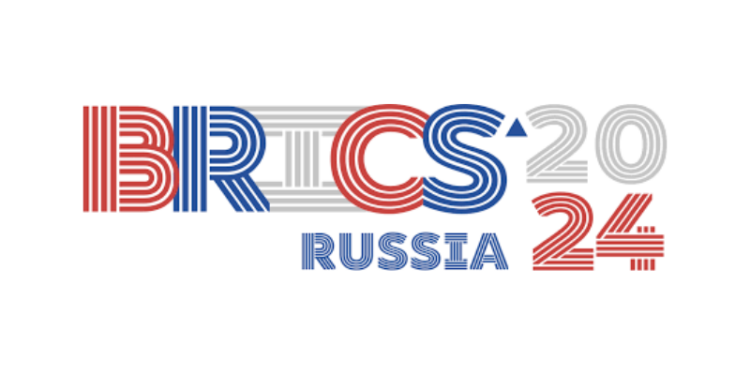On Tuesday, October 22nd, Russian President Vladimir Putin hosted the 16th BRICS Summit in Kazan, a significant diplomatic event that brought together 36 nations, including 22 heads of state. The summit, the largest international gathering in Russia since the invasion of Ukraine, marked a pivotal moment for BRICS (Brazil, Russia, India, China, and South Africa) as it continues to expand its membership and global influence.
What is BRICS?
BRICS is an international economic bloc comprising five major emerging economies: Brazil, Russia, India, China, and South Africa. Formed in 2006 (with South Africa joining in 2011), BRICS serves as a platform for cooperation among developing economies, primarily in the fields of finance, trade, and development. Unlike Western-led groups such as the G7 or the European Union (EU), BRICS operates without a formal charter, budget, or secretariat, functioning instead as a forum for dialogue and collaboration among its member states.
Initially focused on economic cooperation, BRICS has since expanded its agenda to include global governance, security, and climate change while advocating for reforming international institutions such as the United Nations and the International Monetary Fund (IMF). The bloc’s mission is to promote a more equitable global economic order, counterbalance Western economic dominance, and foster development in emerging markets, challenging the dominance of the U.S. dollar and developing alternatives to Western financial systems.
2024 Summit: A Broader Agenda and Expanded Membership
The 2024 BRICS summit in Kazan was held under the theme “Strengthening Multilateralism for Just Global Development and Security.” This summit not only emphasized the bloc’s traditional focus on economic collaboration but also underscored its increasing geopolitical ambitions. One of the most notable developments at the summit was the inclusion of five new member countries: Egypt, Iran, Ethiopia, Saudi Arabia, and the United Arab Emirates. Their membership highlights BRICS’ growing appeal as a forum for countries seeking to diversify their international alliances and reduce reliance on Western institutions.
The expansion of BRICS is not only symbolic but also strategic. With the addition of these new members, BRICS now represents nearly 45% of the global population and accounts for 36% of the world’s GDP (measured by purchasing power), surpassing the G7’s 29%. This expanded economic footprint strengthens BRICS’ influence in global markets, particularly in energy, where member countries produce 45% of the world’s crude oil.
The summit saw expressions of interest from other nations, including Turkey, Vietnam, and Argentina, further highlighting the bloc’s growing significance. However, this rapid expansion also raises questions about internal cohesion, as the new members come with varying political and economic interests.
Financial Independence and the Proposed BRICS Currency
A central theme of the 2024 summit was the desire for financial independence from Western-dominated systems, particularly the U.S. dollar. In the wake of sanctions against Russia and growing trade tensions between the West and China, BRICS members have sought to reduce their reliance on Western financial infrastructure. Discussions at the summit focused on the development of alternative financial tools, including:
- BRICS Pay: A blockchain-based digital payment system designed to facilitate transactions between BRICS countries.
- BRICS Bridge: A multilateral settlement platform that aims to bypass traditional Western financial systems like SWIFT.
- BRICS Clear: A proposed settlement depository to manage cross-border payments within the bloc.
- BRICS Insurance and Rating Systems: Plans to create an independent insurance and credit rating system, free from Western influence.
While these initiatives reflect BRICS’ commitment to reducing dependence on the U.S. dollar, the most controversial proposal was the creation of a common BRICS currency. Brazilian President Luiz Inácio Lula da Silva has been a strong proponent of this idea, arguing that a shared currency would strengthen economic ties within the bloc and further isolate its members from the effects of Western sanctions. However, the proposal has faced resistance from other members, particularly India, which prefers to focus on enhancing trade in local currencies rather than introducing a new, potentially destabilizing currency.
The summit ultimately did not finalize the introduction of a BRICS currency, but the discussions reflect the bloc’s long-term goal of creating a multipolar financial system independent of Western hegemony.
Key Outcomes of the 2024 Summit
The 2024 summit resulted in several important decisions that will shape BRICS’ trajectory in the coming years:
- Adoption of the Kazan Declaration: The BRICS leaders signed the Kazan Declaration, a strategic document outlining the bloc’s long-term goals. These goals include strengthening economic cooperation, promoting sustainable development, and enhancing security collaboration. The declaration also reiterated BRICS’s commitment to multilateralism and its desire to reform international institutions to better reflect developing countries’ interests.
- Expansion of the New Development Bank (NDB): The NDB, established in 2014 to fund infrastructure and development projects in BRICS countries and beyond, continues to be a cornerstone of BRICS’ financial strategy. The bank’s authorized capital of $100 billion has supported over 138 projects in member states and emerging markets, including Egypt and Bangladesh. At the summit, leaders emphasized the NDB’s role in financing sustainable development, particularly in renewable energy and transportation infrastructure.
- Increased Use of Local Currencies: A key achievement of the summit was the commitment by BRICS members to increase trade using local currencies. Russian President Vladimir Putin revealed that 65% of trade between Russia and other BRICS nations is now conducted in local currencies, marking a significant shift away from dollar-denominated trade. This move is seen as a critical step in protecting BRICS economies from external shocks and sanctions.
- Geopolitical Alignment: The summit also provided a platform for BRICS leaders to discuss global security issues. Chinese President Xi Jinping emphasized the deepening partnership between China and Russia, describing their relationship as vital to upholding international justice. Indian Prime Minister Narendra Modi reiterated India’s call for a peaceful resolution to the Ukraine conflict, reflecting India’s nuanced approach to maintaining ties with both Russia and Western powers. South African President Cyril Ramaphosa praised Russia for its historical support during the anti-apartheid struggle, reinforcing the close ties between the two nations.
Global Implications of BRICS’ Expansion and Initiatives
The 2024 BRICS summit marks a turning point in global economic and political relations. With its expanded membership, the bloc has the potential to reshape global governance, particularly in the financial and energy sectors. However, internal divisions within BRICS—particularly between members advocating for a more anti-Western stance (Russia and China) and those seeking a balanced approach (Brazil and India)—will test the bloc’s ability to maintain a unified strategy.
United Nations Secretary-General António Guterres’ attendance at the summit stirred controversy, as Ukraine condemned his decision to meet with Putin. This came after the International Criminal Court issued a warrant for Putin’s arrest earlier in 2023 for war crimes in Ukraine. Nevertheless, Guterres’ participation underscores the growing significance of the BRICS bloc on the global stage.
The outcomes of the 2024 summit indicate that BRICS is committed to establishing a multipolar global order, reducing dependency on Western financial systems, and promoting economic development in emerging markets. As BRICS continues to grow in influence, its role in global affairs will only become more significant, challenging the dominance of Western-led institutions like the IMF and World Bank.










